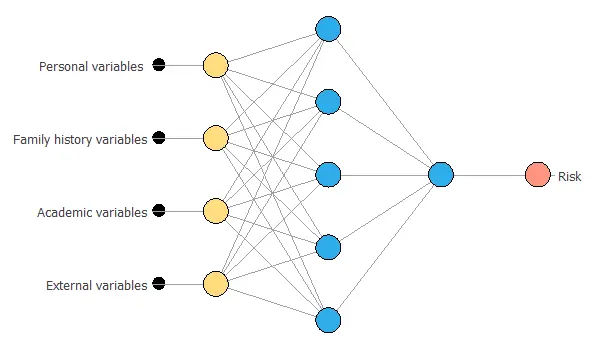Advanced analytics enable customers to obtain quotes more quickly and accurately while maintaining their privacy boundaries.
Contents
Objectives
Risk assessment refers to how a company identifies hazards and risk factors associated with the activities it develops that may cause potential harm.
Depending on the activity sector of each company, several risk factors could arise. Some examples include credit and reputation risk for banks, as well as the challenge of evaluating a client’s profile to determine eligibility for insurance from insurance companies.
Due to their exposure to clients and financial markets, banking and insurance are two main sectors to which risk assessment can be applied.
This helps minimize credit and market risks, among others, for banking and the risk of a wrong evaluation of a client’s profile who requests insurance.
The following variables can influence the risk:
- Socio-demographic factors
- Products with the company
- Employment information
- Insurance characteristics
- Insurance history
- Etc
Benefits
The results help companies better understand the existing assessment, significantly enabling them to streamline the process.
IDENTIFY POTENTIAL RISKS
Utilize all available information to identify potential hazards and risk factors, and characterize them accordingly.
ANALYZE AND EVALUATE THE RISKS
Assess the danger of the risks and evaluate the probability and reasons for their occurrence.
PREVENT AND SOLVE THE HARMS
Draw a plan to eliminate the hazard if possible or set measures in motion to prevent the harm.
INCREASE PROFITS, REDUCE LOSSES
A thorough risk assessment reduces the likelihood of unexpected events, thereby avoiding losses due to poor decisions and maximizing benefits.
Approach
Thanks to their ability to generalize knowledge, neural networks are an effective tool for quantifying the risks associated with different areas of a company’s activities.
They also allow for assessing the likelihood of risk occurrence based on objective reasons and previous experiences.
Neural Designer is a machine learning software that can manage large amounts of data using the most suitable mathematical methods for the user’s objective.
Neural Designer analyzes all potential risk factors and their characteristics, assessing each according to its probability of occurrence and severity, so that your company can take adequate action to prevent any possible harm.
This information is organized in a dataset.
Depending on the study’s case, the dataset may contain different information, ranging from a client’s characteristics to a company’s financial details.
The accuracy of the assessment depends on the quality of the variables included in the dataset.
Neural Designer studies the variables in-depth, selecting the most relevant ones for analysis.
The following image represents a neural network that could be used for this case.

As inputs, it receives information about personal characteristics, family history, academic variables, and any other external variables that may be considered relevant.
As output, the neural network assesses the risk.
Conclusions
In conclusion, risk assessment enables companies to identify and mitigate hazards and risk factors associated with their activities that may cause potential harm.
Neural Designer utilizes artificial intelligence to identify the reasons and factors that contribute to them and reduce losses.







